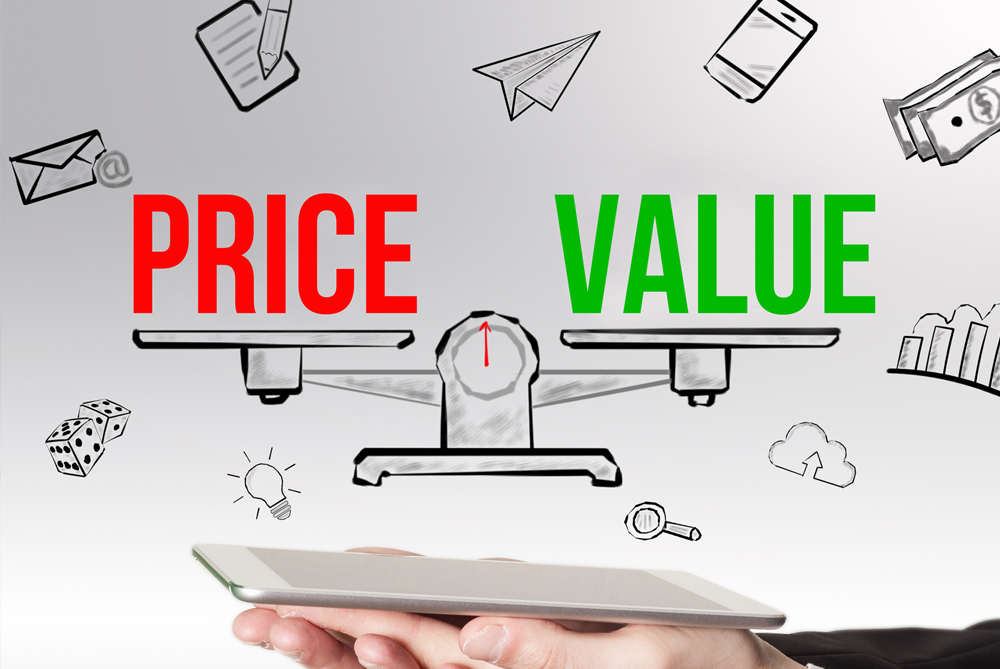Striking the Balance: Price vs. Value in Marketing
Oct 11, 2023 - Digital Marketing

As Warren Buffet so elegantly put it, "Price is what you pay; value is what you get." It seems simple enough but in reality, it's so much more complex.
In the dynamic world of marketing, businesses often find themselves at a crossroads, where the decisions they make regarding price and value can lead to vastly different outcomes. While there is no one-size-fits-all answer, the path a business chooses depends on its unique target audience and the nature of the products or services it offers.
Price vs. Value: What's the Difference?
At the core of this dilemma lies the distinction between price and value. Price is the straightforward amount of money a customer exchanges for a product or service, while value represents the perceived worth of that product or service to the customer. The perception of value is influenced by multiple factors, including product quality, brand reputation, the overall customer experience, and the specific benefits the product or service provides.
The Pervasive Importance of Value
For customers, value is paramount. They want to feel that their hard-earned money is well spent. When a customer deems a product or service overpriced, they are less likely to make a purchase. On the flip side, when they perceive genuine value, they become more willing to invest, even if the price is relatively high.
Strategies to Embrace the Value Proposition
Businesses can adopt various strategies to center their focus on value:
- High-Quality Products and Services: Maintaining consistently high quality helps businesses convey value to their customers. When customers trust that a product won't disappoint, they are more likely to invest in it.
- Unique Customer Experiences: Crafting a unique and memorable customer experience can set a business apart. Customers often value not just the product itself but the entire journey that comes with it.
- Problem-Solving Offerings: Products or services that address specific problems or fulfill essential needs are inherently valuable. Businesses that cater to these demands can thrive by delivering solutions.
Leading by Example: Businesses that Prioritie Value
Several renowned companies exemplify the concept of offering value to customers:
- Apple: Apple is celebrated for its commitment to high-quality products and creating a unique customer experience that keeps users loyal.
- Tesla: Tesla's innovative electric vehicles not only contribute to a sustainable future but also offer value through cutting-edge technology.
- Lululemon: Lululemon's dedication to crafting high-quality athletic apparel and fostering a sense of community among its customers has solidified its position as a value-focused brand.
- Amazon: Amazon's vast product selection, competitive prices, and convenience-driven shopping experience demonstrate a commitment to delivering value.
Balancing the Scales: Price and Value
While value is pivotal, the importance of price should not be underestimated. Businesses must establish competitive prices that allow them to remain profitable. However, a myopic focus on price alone can lead to a disconnect with customers. Striking the right balance between price and value is essential.
Conclusion
The conundrum of price versus value in marketing is a multifaceted challenge. There is no definitive right or wrong answer, as the approach a business should take hinges on its specific audience and offerings. Nonetheless, businesses should endeavor to harmonize price and value. They should strive to provide products or services that genuinely resonate with their customers while maintaining competitive pricing. This equilibrium ultimately leads to not just successful transactions but also lasting relationships with a satisfied customer base.

 Our Teams
Our Teams Our Clients
Our Clients
 +607-288 1726
+607-288 1726 Whatsapp Us
Whatsapp Us

